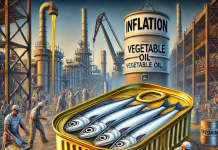Morocco’s economy has experienced relatively stable growth in recent years, according to a report on the assessment of government action 2017-2021.
“The growth rate no longer depends much on the volatility of agricultural activity that has been impacted by drought for years, especially in 2019,” which reflects the development that several productive sectors have experienced, including automotive and aerospace industries, which have contributed to the stabilization of economic growth, the report noted.
In 2019, the Gross Domestic Product (GDP) contracted by 2.5%, after increases of 4.2% and 3.1% respectively in 2017 and 2018. This evolution is explained, on the one hand, by the decline in external demand addressed to Morocco and the slowdown in the flow of foreign direct investment (FDI) in an international context marked by geopolitical tensions.
On the other hand, this is due to the decline in agricultural value added of 5.8%, resulting in a contraction of income and domestic demand, especially with regard to the rural population. This decline was offset by the continued improvement in the value added of the non-agricultural sectors, which recorded an increase of 3.8% in 2019 compared to 2.9% in 2018.
After an expected contraction of 6.3% in 2020, due to the health crisis related to the new coronavirus, the Moroccan economy is expected to grow by 5.3% in 2021, the document said, noting that the impact of the health crisis on Morocco’s economic performance is relatively limited compared to other countries in the region.
The document also stated that the national GDP has experienced a remarkable annual growth of 3.7% between 2007 and 2019, an overall growth exceeding 55%. Thus, several studies and international reports estimate that the growth will be more sustained thanks to the set of structural reforms that the country knows and the implementation of the new development model.
As for inflation, the report indicated that over the past two decades, the average inflation rate has been kept below 2%. During the period 2017-2019, the inflation rate was less than 1%, the lowest in the region. It added that this relatively low rate contributes to the preservation of the purchasing power of families.





